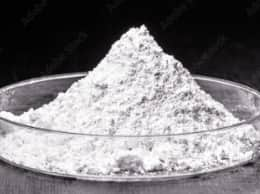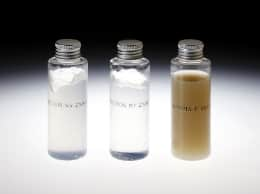KUNIPIA / SUMECTON
Introduction
Bentonite, which has swelling and thickening properties, cation exchange ability, and other properties, is used in various industrial fields around us. However, bentonite and other kinds of natural clay contain not only clay minerals but also quartz, feldspar, and other impurities. These impurities may make such natural clay unsuitable for use in the development of industrial materials. For this reason, clay with a low impurity content is required.
KUNIPIA, one of our products, is made by removing impurities from bentonite to maximize the purity of montmorillonite, which is its main component.
Recently, there have been needs for increasingly advanced functions and technologies for clay. However, it is difficult to completely control the properties of KUNIPIA, which is natural clay. In order to address this problem, synthetic clay has been developed.
SUMECTON, another one of our products, is clay synthesized chemically by hydrothermal treatment. Because of their performance, KUNIPIA and SUMECTON are used and studied in various industrial fields.
KUNIPIA and SUMECTON
KUNIPIA and SUMECTON are layered silicate minerals, and consist of a clay mineral that belongs in the category of smectite. There are various types of smectite such as montmorillonite, beidellite, saponite, stevensite, and hectorite.
KUNIPIA is refined bentonite made by removing impurities from bentonite without using any chemical substances to increase the purity of montmorillonite, which is its main component. A unit crystal of montmorillonite, which is the main component of KUNIPIA, is a very thin (flat) plate that is about 1 nm thick and about 100 to 1,000 nm wide, and has a very large specific surface area.
SUMECTON is impurity-free, high-purity clay synthesized artificially by hydrothermal treatment.
We can make saponite, stevensite, and hectorite by chemical synthesis.
KUNIPIA and SUMECTON have various properties including swelling and thickening properties, thixotropy, and cation exchange ability. In addition, these inorganic materials are hardly susceptible to microbial decomposition or degradation and are human body-friendly.
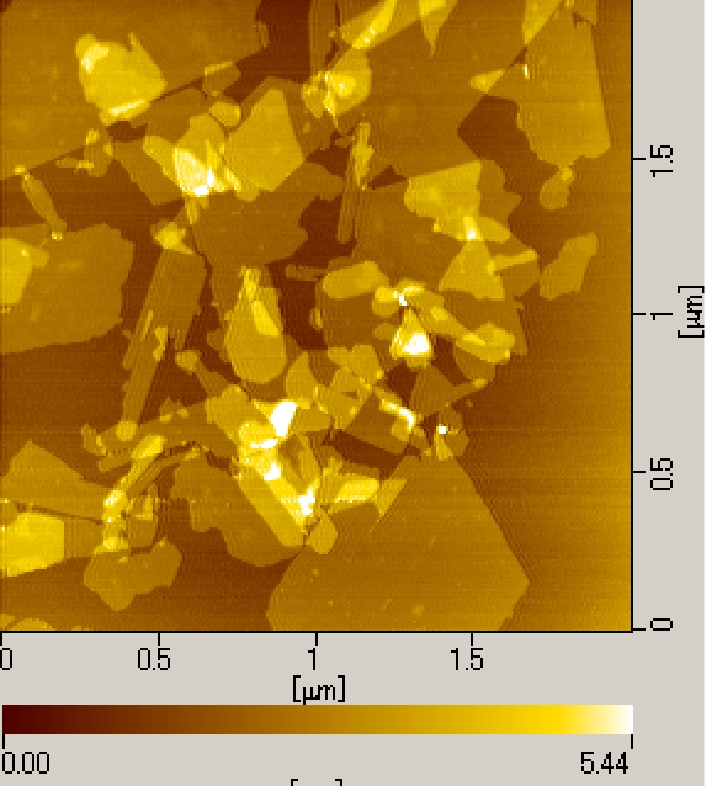
AFM image of KUNIPIA
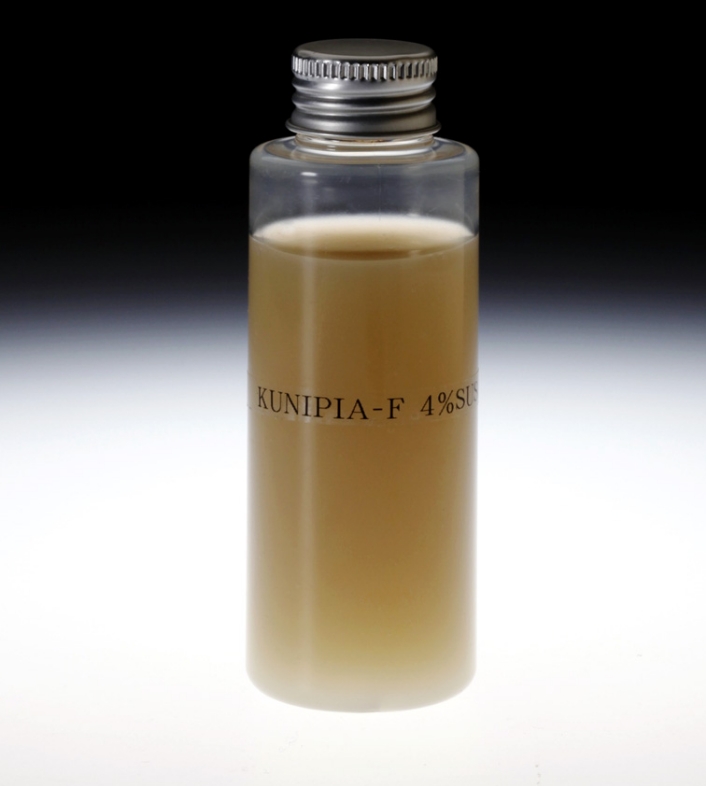
KUNIPIA-F
Dispersion liquid
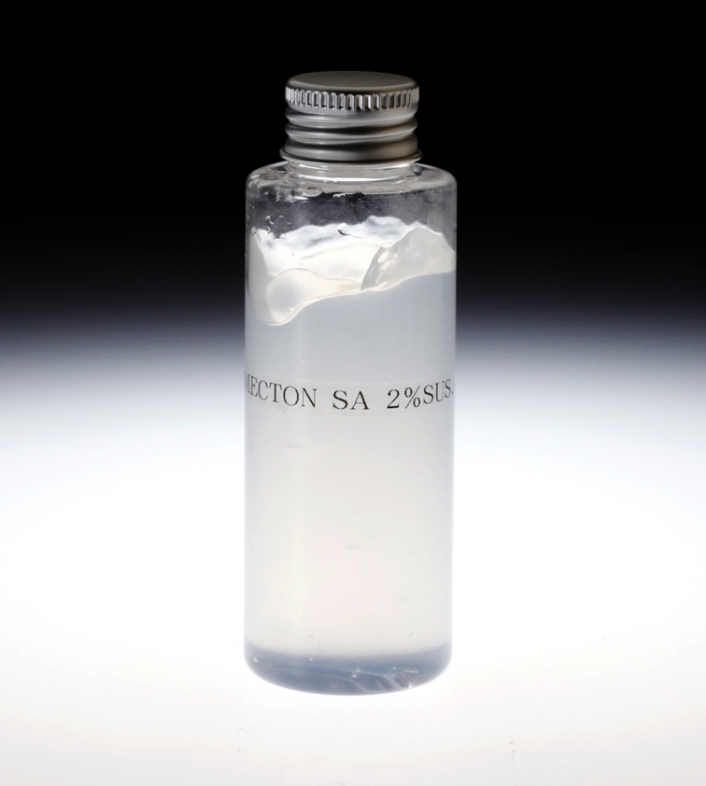
SUMECTON-SA
Dispersion liquid
Swelling property
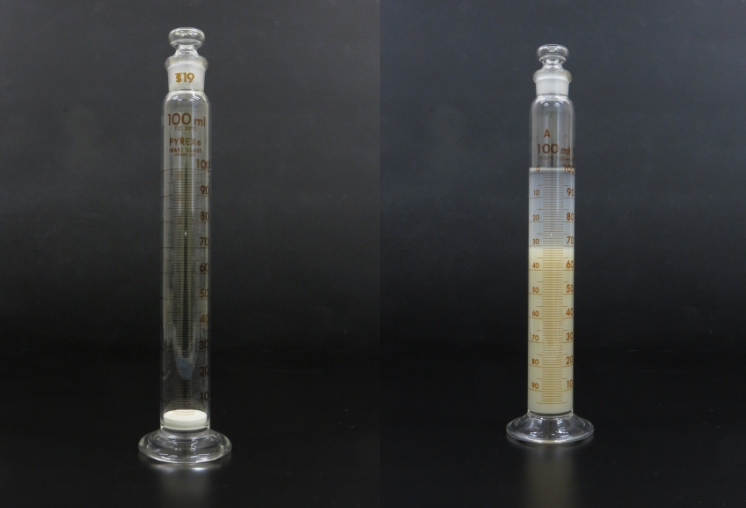
Measurement of the swelling
power of KUNIPIA-F
KUNIPIA and SUMECTON have the property of swelling to many times their original volume when they absorb water. When KUNIPIA and SUMECTON come in contact with water, interlayer cations hydrate with water molecules, increasing the distance between unit layers. This is the mechanism behind the swelling property.
Thickening effect
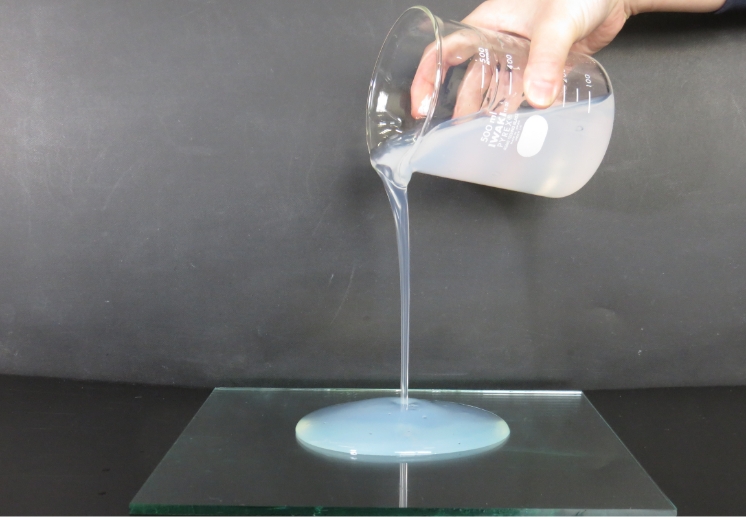
SUMECTON-SA
When KUNIPIA and SUMECTON are dispersed in water, interlayer cations hydrate with water molecules, and they are separated into unit layers. KUNIPIA and SUMECTON separated into unit layers form a thick hydrate layer in the unit layer surfaces, which increases the solid phase rate in the dispersion liquid. This makes the viscosity of the dispersion liquid much higher than that of the dispersion medium or water. This is why the clay shows a viscous property.
Thus, by changing the ratio between water and KUNIPIA and SUMECTON dissolved in water, the viscosity of the dispersion liquid can be adjusted flexibly to make a low-viscosity dispersion liquid or a hard gel. Both KUNIPIA and SUMECTON produce an excellent thickening effect.
Thixotropy
KUNIPIA and SUMECTON have shear thinning property which reduce viscosity by shearing, and also have thixotropic property which is changed viscosity with time.
The mechanism is considered as follows:
KUNIPIA and SUMECTON are negatively charged (-) on the unit layer faces and positively charged (+) on the edges.
After sufficiently dispersing in water and then let to stand, the negatively charged layer faces and the positively charged edges attract each other to form a steric association structure due to bonding between the layer faces and edges. This is called “Card-house structure”.
As increasing the shear rate, card-house structure breaks down and viscosity decreases. Then, as lowering the shear rate, the layer faces and the edges form a steric association structure and viscosity increases. (Fig.)
At that time, even if they are same shear rates, the viscosity values are different between the outward and the return(graph). This means that the structure has time to recover. This benefit is used in various purposes as such as preventing dripping of cosmetics and paints.
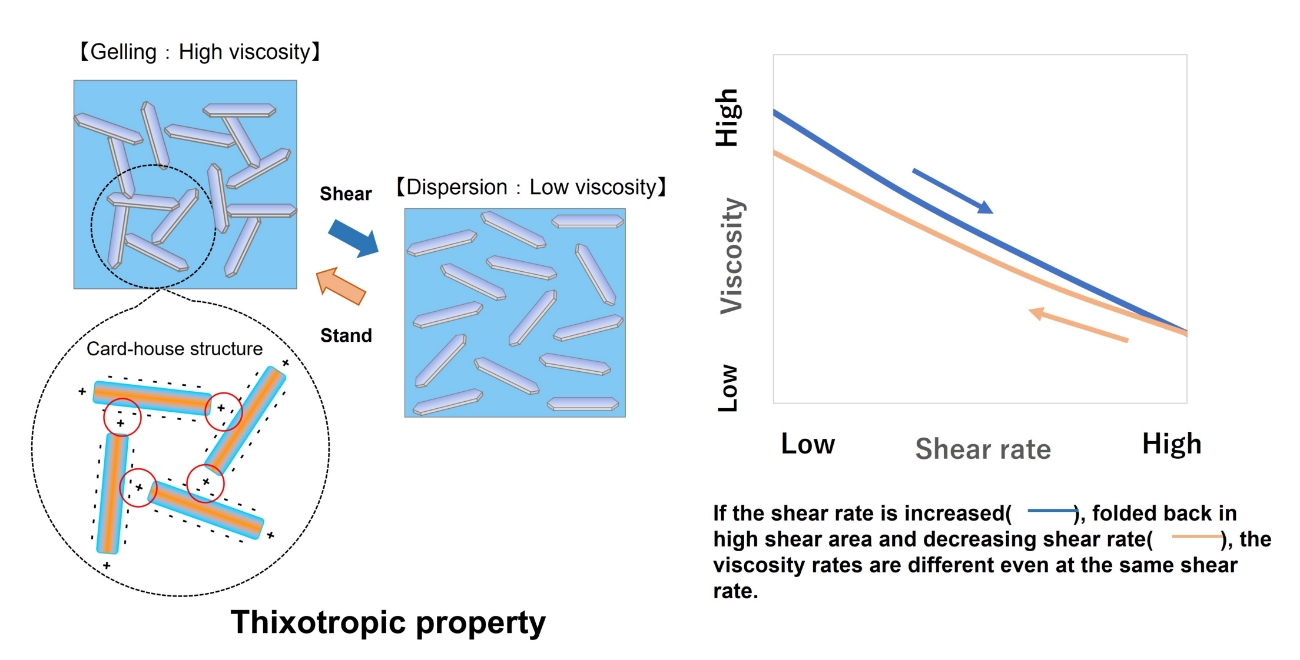
Cation exchange
The surface of a unit layer of KUNIPIA and SUMECTON is short of electric charge and negatively charged. In order to maintain balance in electric charge, cations are introduced onto the unit layer surface. These cations can be exchanged easily with other cations, and are also called exchangeable cations. By changing the type of exchangeable cations, the properties can be changed. Thus, the possibility of using them as catalysts has been studied. The negative charge magnitude of montmorillonite and saponite depends on the mineral species, and thus, they have exchangeable cations in varying amounts. By exchanging inorganic cations with quaternary ammonium ions or other organic cations, organic bentonite that can be used with various organic solvents can be made.
Uses of KUNIPIA and SUMECTON
KUNIPIA and SUMECTON have various properties including swelling and thickening properties, thixotropy, and cation exchange ability. Because of these properties, they are used and studied in various industrial fields. These inorganic materials do not become rotten and are hardly susceptible to quality deterioration. Some use examples are introduced below:
Refined bentonite:KUNIPIA Series
Products of this series are used as viscosity modifiers or antisettling agents for water-based paints and cosmetics. They have a very large aspect ratio and are used as resin fillers to give a gas barrier property.
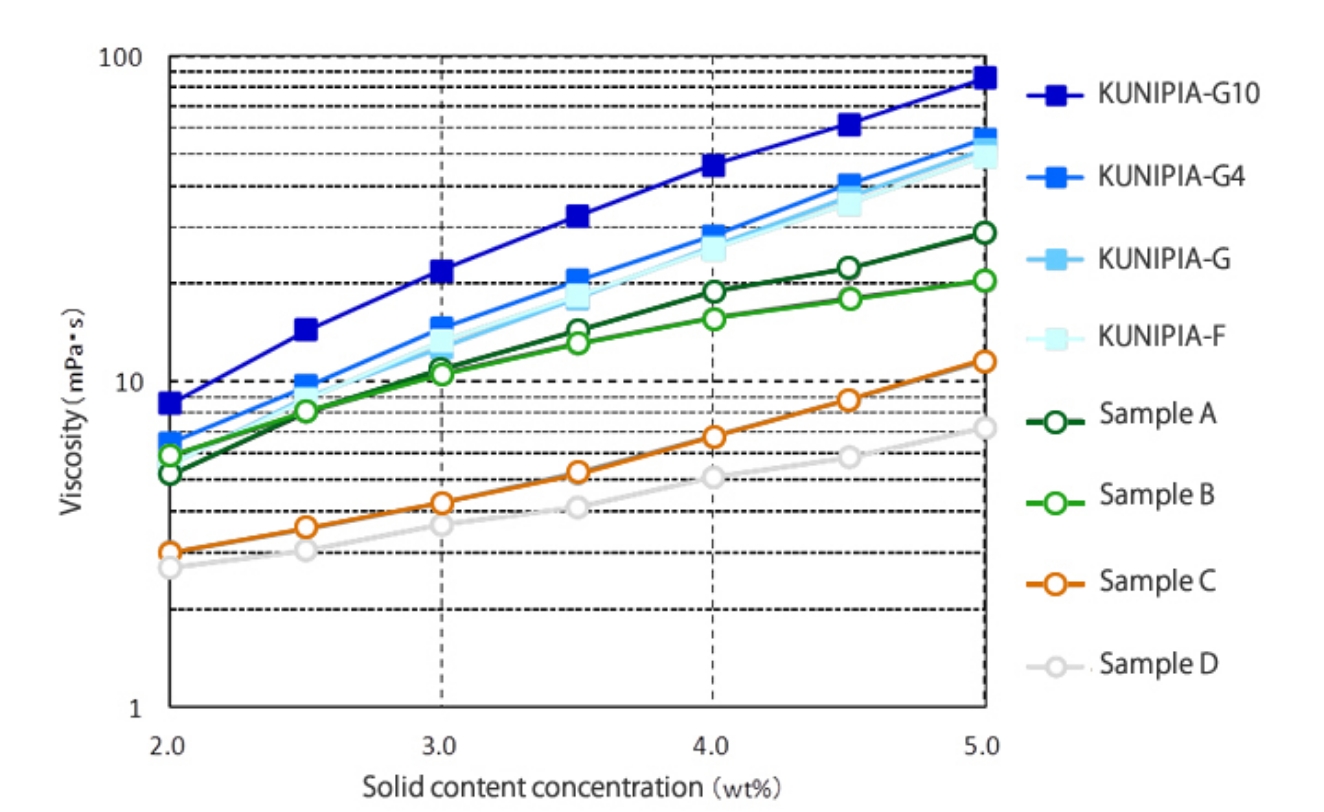
Relations between viscosity and solid content concentration
of refined bentonite(KUNIPIA)
Synthetic smectite : SUMECTON Series
Products of this series are highly transparent when dispersed in water, and produce a very high thickening effect in small amounts. Similarly to KUNIPIA, these products are used as viscosity modifiers or antisettling agents for water-based paints and cosmetics.
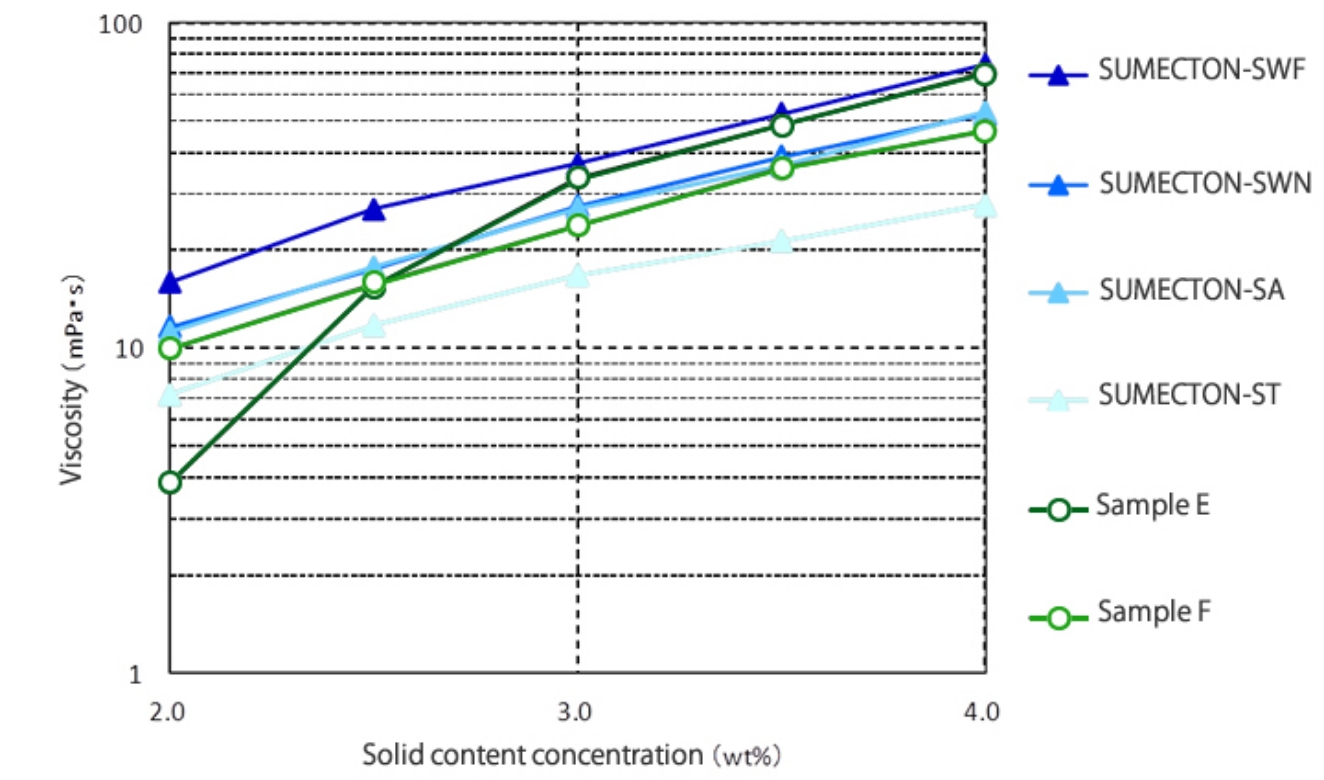
Relations between viscosity and solid content concentration
of synthetic smectite(SUMECTON)
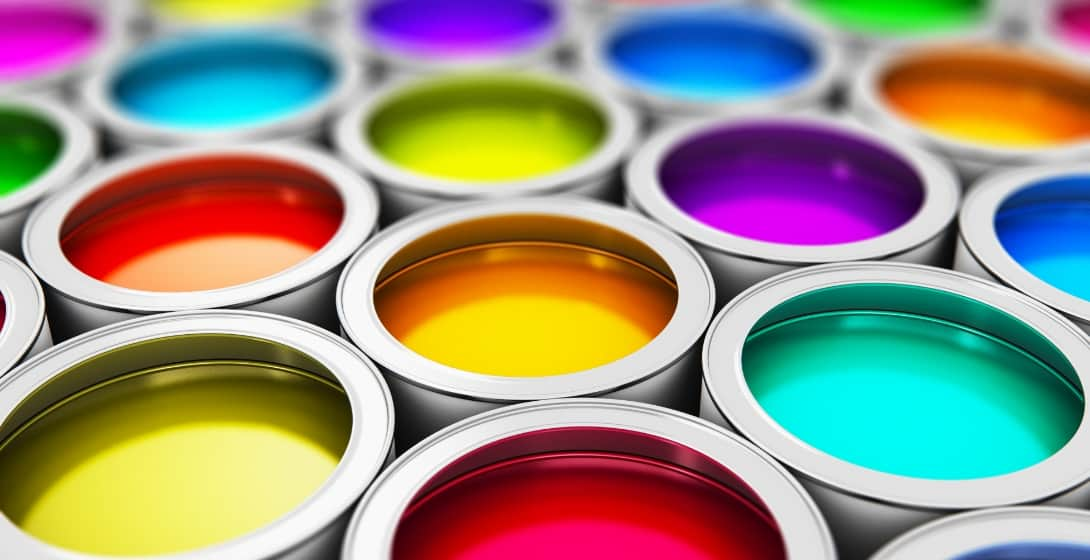
Paint / Ink
Because of their thickening effect, they are used widely as antisettling agents for pigments. Because of their thixotropy, KUNIPIA and SUMECTON are used to prevent dripping or to improve spinnability. Colorless, translucent SUMECTON does not affect paint or ink colors.
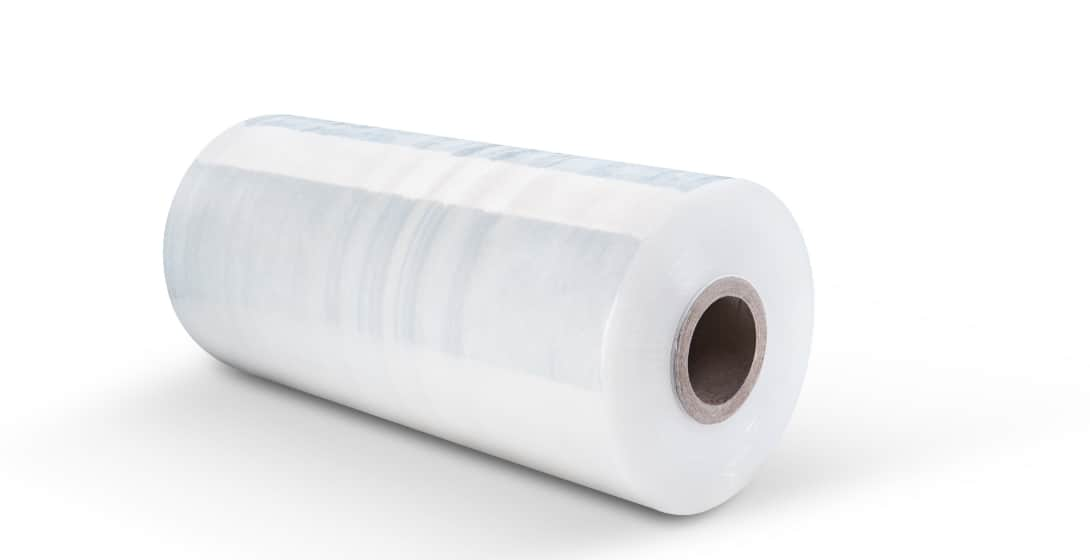
Resin Fillers
Recently, their potential as high-functionality materials has been highly valued. By adding a small percent of KUNIPIA and SUMECTON to a resin, its barrier property can be improved, and additional functions such as heat resistance and flame resistance can be given to it.

Raw Materials for Flowable Formulations
KUNIPIA and SUMECTON are also used in liquid agrochemicals. It is difficult to keep microparticulated active ingredients of agrochemicals dispersed in water alone. By using KUNIPIA and SUMECTON with a thickening effect, they can be kept dispersed in water.

Cosmetics
They have been used in various cosmetics for a long time and attracted attention mainly as thickeners. Recently, they have been expected to produce a moisturizing effect for long hours because of their coating effect brought about by the high aspect ratio, in addition to a thickening effect. In addition, fine particles of KUNIPIA and SUMECTON with an absorptive effect go deep down into the skin pores and effectively remove dirt.
Others
KUNIPIA and SUMECTON have cation exchange ability. By taking advantage of this property, the type of interlayer cations can be changed to add new functions. Organic bentonite is a material made by taking advantage of this cation exchange ability. These interlayer cations will find further applications in the future.
Organic bentonite : KUNIVIS Series
Organic synthetic smectite : SUMECTON Series
We chemically modified the surface of clay particles to develop another type of smectite with improved compatibility with various kinds of organic solvents. This is available in two series: KUNIVIS Series with a high thickening effect and highly-transparent SUMECTON Series. These are used as viscosity modifiers or antisettling agents for organic solvent-based paints.
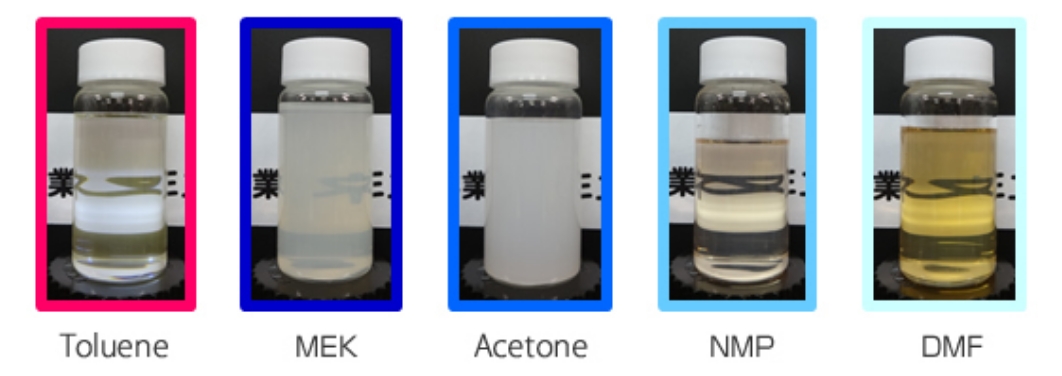
Smectite dispersed in various solvents
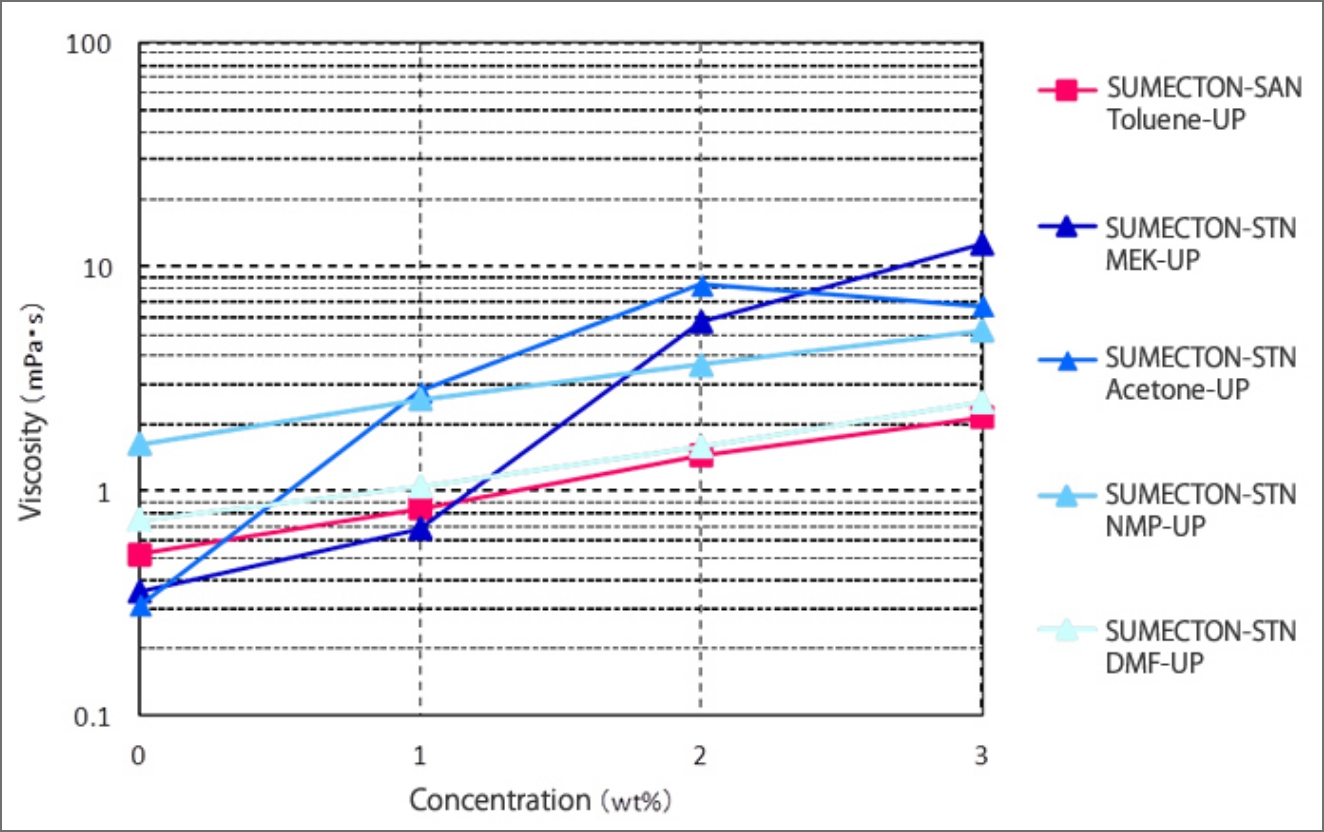
Thickening effects of smectite dispersed in various solvents
FAQ
Please tell me about the difference between KUNIPIA and SUMECTON and your other product series.
The characteristics of bentonite originate largely from the raw material.
Using high-quality raw ore produced in Yamagata Prefecture as the raw material, the KUNIPIA series has excellent
thickening properties, adsorption effect, moisturizing effect, and emulsification stability.
The SUMECTON series has outstanding transparency and can be expected to used for applications that differ from those of
natural bentonite.
What is the difference between KUNIPIA-F and KUNIPIA-G?
There is no difference in quality between them. Only the product shape is different: KUNIPIA-F is a powdery product,
whereas KUNIPIA-G is a scaly (flaky) product.
KUNIPIA-G is bulkier than KUNIPIA-F because of its scaly shape, but it is relatively less likely to form clumps when
added to water.
